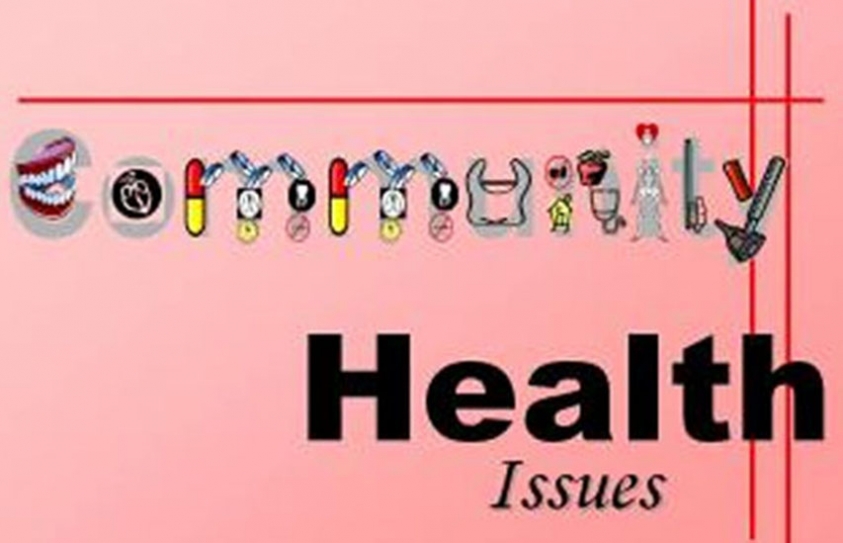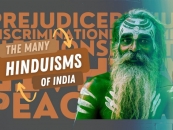
Traditions, Society And Healthcare- Taking A Look At Community Health Issues
by Deepa Bhalerao April 8 2015, 1:39 pm Estimated Reading Time: 8 mins, 45 secsIt was a cool afternoon in the winter of 1990. We were walking toward a remote village on a dirt road through a forest. It was a voyage of delightful discovery of flora and fauna one had only read about in botany textbooks. The shades of green were many, as were the wildflowers and berries that loomed into sight as we walked on the narrow, winding road that was going uphill. The pristine beauty of nature was almost overwhelming to us- a bunch of young students who were pursuing their education in one of India?? most densely populated cities.
We were excited to go to a village that had missed the attention of the census and the malaria control authorities (if our resourceful guide was to be believed). This was located on the border of the Kanker and the Jagdalpur districts in Madhya Pradesh and we were in the heart of a dense forest. After crossing a river, and walking uphill for almost an hour and a half through a rocky route, we came to a clearing. The place was dotted with thatched roof huts on smooth brown ground. Goats were tied in some of the backyards, and very young children were wandering about. It was peaceful and sleepy.
We went to one house and asked to speak to the people. As our guide informed us, there were only some women ina few of the houses. The others men and women had all gone hunting and gathering in the forest. The women who had stayed back were the young women with babies and the very old ones. After an exchange on their life, work and families, we asked about their customs and practices. All this conversation was conducted through a translator, who spoke their language. What we learnt, stopped us in our tracks - No child in that village had ever received any vaccine. They had had no contact with a modern health practitioner. Dais from the village conducted deliveries. Many children had died soon after birth. Dying in childbirth was just a woman?? luck and destiny. Illness was curse of god and life was as comfortable as the gods had pre-decided it.
We took in this information and the atmosphere of serenity transformed into one of discomfort. Suddenly, the idyllic setting and the beauty of the surrounding seemed like a strange backdrop for a harsh and ugly reality. What came next was even more disturbing. Children looked small for their age and almost all had an orange tint to their hair, signifying protein-energy malnutrition (one of the effects of low protein diets and a precursor to many health issues in later life if left untreated). To top it all, one household had a child who was very ill. He was running a high fever and was weak and delirious. It was obvious that he needed immediate medical intervention. Our suggestions to take him to a health centre were met with a hostile denial. No amount of persuasion worked. We were asked to leave the house and also the village immediately. Shocked, enraged and tired, we walked back to our camp. Tempers ran high, and eventually, silence engulfed the group. Fifteen youth, with two instructors who were asking us to remain calm, trekked down the arduous route in what felt like a dream promenade gone awry.
Customs and traditions are the foundation on which societies operate. They are the invisible backbone of what keeps a community together. They set limits, draw boundaries and decide reformative interventions for what is perceived as a transgression of boundaries as defined by the society. Culture derives from the larger context of a society, and an individual is taught the overt and subtle modes of behaviour in the universe that s/he belongs to by the incident of birth. Whether one is born in a remote tribe, or in a modern cosmopolitan setting, the context of a culture never escapes us. Some communities are limiting, and some are liberal, but individuals have to design their behaviour around the demands and the norms of the settings.While most traditions are methods by which we deal with the need for social connect, derive a sense of purpose and fulfil the need for belonging, they are also a point of discontent as they seem to perform a peculiar need for constancy in a world that is ever evolving. This aspect is what wedges a rift between generations and provides a platform for stress. It can be argued that traditions have an important role to play as they have been tried and tested methods for the preservation of life and of the precious bonds of family and community. But it is precisely in the enthusiasm of their implementation, that dissonance and then discontent, arises.
Healthcare is one such aspect of life where modern scientific knowledge ?comes into constant interface with traditional beliefs and practices. It is only with the availability of an optimum level of healthcare, that we can even begin to think of being functional and productive as individuals. Keeping good health through life is always a challenge despite the rapid and complex advances in modern medicine for the betterment of its quality. And yet, ironically, it is the very juxtaposition of tradition vis-a-vis modern health care that makes for the cul-de-sac that is often the roadblock in the efforts to provide universal primary health care. The exact origin of many traditions is very hard to trace. Many have multiple explanations. ?A lot of traditions are not harmful. However, one encounters a problem when they clash directly with scientifically proven knowledge in situations that can affect the health and or wellbeing of an individual. Public health has always had to deal with many such situations where traditions clash with modern scientific information.
Some examples from community health where traditions come in the way of modern healthcare practices in our country are-
- Giving a girl child less importance than a boy child (a direct effect of patriarchal systems)- in terms of food, education and rights in general
- Making a girl do household work from a very young age (as, by the same logic of patriarchal thinking, she is supposed to be trained for a life of nurturing and housekeeping)
- Making a girl child give up education for a variety of reasons that include taking up the roles of a woman in the household, the need to protect her, etc.
- Discouraging a woman to bathe during her menstrual period (Concepts of purity and impurity)
- Asking a woman to stay separately during the menses (Concepts of purity and impurity)
- Not actively encouraging the use of contraception due to misconceptions that contraceptive methods affect fertility and thereby putting the young woman to risks of early pregnancy even when she may not be emotionally prepared for motherhood
- Asking a pregnant woman to eat for two persons
- Some tribes in rural Maharashtra expect and/or force women to eat less during her pregnancy, to ensure that the baby is not very large in size and the delivery is easy (misconceptions like these about nutrition lead to a low birth weight and at-risk infants)
- Smearing the bellybutton of a new-born with cow-dung where the umbilical cord has been cut after birth (Dais or traditional midwives are known to do this in rural areas)
- Bathing a baby immediately after birth (Traditional concepts of cleanliness, etc.)
- Feeding a new-born infant honey before breastfeeding (a dangerous practice as honey can contain very harmful bacteria that could even kill the baby)
- Discarding the ??ellow thick first milk??(A harmful practice as Colostrum is rich in nutrients and protective antibodies and feeding the infant with it ensures immunity)
- Not encouraging contraception till a male child is born ( Inadequate birth-spacing leads to very little age difference between two children and therefore negligence of the mother?? health as also the children??)
?As a student and then as a practitioner of community health in rural and urban settings, the initial feeling of helplessness as encountered in that remote tribal village became a lesson in how interventions that appear simple and straightforward may not be the easiest to implement. Over the years, it became clear that while there may be a certain logic to a certain practice, it is not always possible to implement it, that value systems are likely to be different for different groups, as the fact that different societies might see an issue very differently from each other. Culture and tradition have their own place in our life, and they prove to be anchors in times of uncertainty. Modern knowledge is also equally important to internalise, and a new practice today has the capacity to become a best practice tomorrow and perhaps a beloved tradition subsequently. We now look to many state-of-the-art health-knowledge and interventions to help us make that difference in peoples??lives. We try to imbibe the ability of finding ways to reach out to the people with new and competent solutions to their basic and advanced healthcare issues, despite the possible conflict it may have with their comfort zones of traditional practices. In this desire for finding the right space to put forth the message of good health choices and practices that enhance it, there is a need to seek more partnerships and mechanisms within the society we live in.? Apart from traditional methods that work well for healthcare providers, a new ally is becoming more and more obvious as a strong partner for speaking directly and yet unobtrusively to people who have always liked listening to it. This is the powerful and attractive audio-visual media. Films, television and digital media can communicate effortlessly with large numbers of people without preaching, their biggest strength being the fact that they can connect with even those who do not know how to read and write.
?The media, in its many forms and its many vehicles, has always sought to address issues that interest people and engage them in a meaningful way. Media has the power to bring out the shared joys and sorrows through enchanting and relevant stories. It is now our endeavour to bank more and more upon the range of new, upcoming as well as the well-known and well-loved media platforms to say it as best as we can, to those who turn to them for entertainment and information. The creative communities are our refuge for entertainment. We hope to make them our constant and trusted partners in reaching out the crucial messages on important health and life choices also.?




-173X130.jpg)
-173X130.jpg)
-173X130.jpg)
-173X130.jpg)

-173X130.jpg)
-173X130.jpg)
-173X130.jpg)